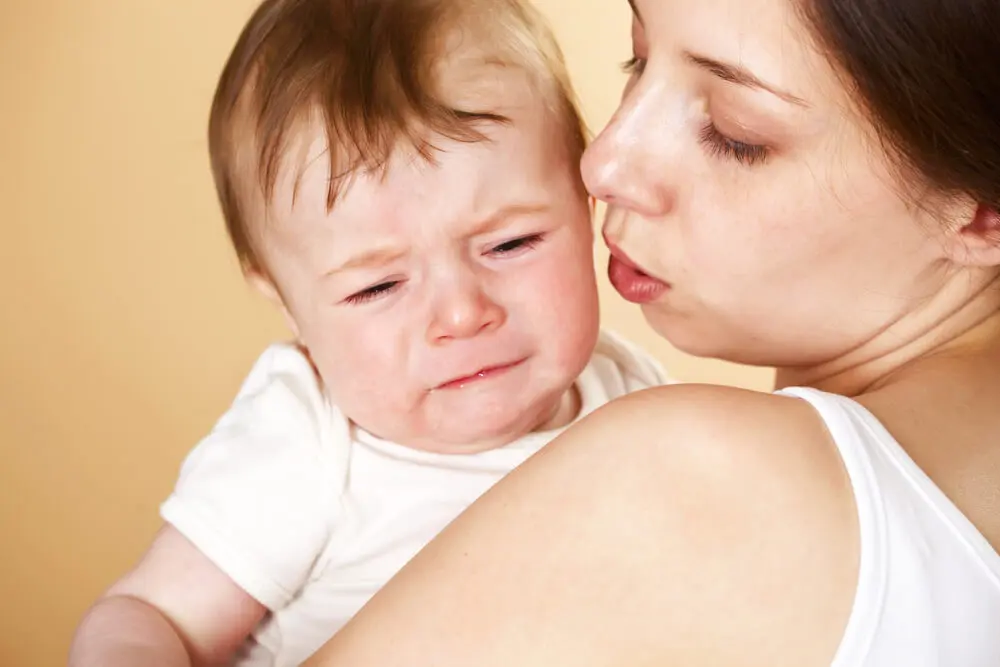Attachment Theory: How Does Attachment Influence Our Children?


Written and verified by the psychologist Elena Sanz
If we talk about educational and developmental psychology, attachment theory is probably one of the best-known theories. Thanks to it, we have gained a better understanding of the importance of the bond between parents and children. Not only that, but we have also been able to understand how it’s a determining factor in the formation of personality.
Attachment style influences children’s self-esteem and their ability to trust others and explore their surrounding environment. This attachment modulates the way an infant perceives him o herself, the ability he or she has to relate to others, and the quality of his or her emotional health. Therefore, if you have children, it’s important for you to be familiar with this theory.
What is attachment?
Attachment is the intense, long-lasting, affectionate bond that develops between an infant and his or her primary caregivers. An infant can become attached to several people, but it’s the relationship with the parents that are considered to be the most important.
The purpose of this attachment is to increase the infant’s chances of survival. A newborn is completely dependent on the caregiver, not only to guarantee its physical integrity, but also for its correct emotional development.
In order to generate this attachment, the baby performs a series of behaviors (such as crying, babbling, or social smiling) that attract the mother’s or father’s attention and promote this physical closeness and emotional connection. At the same time, the so-called “maternal or paternal behaviors” emerge in parents, which are oxytocin-mediated reactions that lead parents to pay attention to the baby’s needs and take care of them.
The ultimate goal is for the parent to be present and available to the baby and to be sensitive and responsive to his or her demands. She or he should be able to respond appropriately and help the infant to regulate himself or herself emotionally. Thus, day by day and with each interaction, the child generates a vision of himself or herself and of others that will determine his or her future personality.
We think you may also enjoy reading this article: Attachment Parenting: What Is It and What Are The Benefits?
The origins of attachment theory
All this knowledge is the result of decades of research. We can situate the origins of attachment theory in the work of the English psychologist John Bowlby, who postulated several ideas in this regard:
- An infant has an innate need for attachment to a primary figure. This idea, known as monotropy, indicates that there must be a primary bond (more important and qualitatively different from the rest) that is created with the parent.
- There is a critical period for the formation of the attachment bond. If, during the first years of life, the baby is deprived of this maternal or paternal bond (or if it is interrupted), the consequences can be almost irreversible.
- Attachment promotes closeness between mother and/or father and baby and causes the latter to experience a high level of distress in the face of separation.
- This relationship with the mother or main caregiver forges a mental model with which the child will be governed from that moment on. In other words, this relationship is a determining factor in the vision that the child will develop of himself or herself, of others, and of the world, and will influence his or her long-term psychological and emotional health.

Mary Ainsworth and her contributions to attachment theory
A second figure of great relevance within attachment theory is Mary Ainsworth. This American psychoanalyst designed a protocol to evaluate and identify attachment types. Thus, she devised the famous experiment known as “the strange situation”, in which several mother-baby dyads were observed in terms of their exchanges and reactions.
The idea was to analyze how babies behaved when in the presence of their mothers in an unfamiliar situation, how they reacted when the mother left, and what they did upon her return. The findings identified three different attachment styles that can be generated.
1. Secure attachment
This is the ideal style of attachment, which occurs when the mother is sensitive and responsive to the infant’s needs and emotions and responds promptly and consistently. This generates in the child a sense of security that allows him/her to venture out to explore the environment and regulate his/her emotions, thanks to the proximity to the mother.
Infants with secure attachment become people who trust themselves and others, and who know how to relate based on interdependence. That is, they know how to set boundaries, but are not afraid of emotional intimacy.
2. Ambivalent attachment
This style is generated when the mother is inconsistent in her reactions. In general, she’s not emotionally available to the baby, and, although sometimes she is attentive and affectionate, at other times, she acts in a hostile or indifferent manner. This generates a feeling of uncertainty in the face of an unpredictable reality in the child, which leads to serious difficulties in trusting.
In the future, these children become very insecure, anxious, and dependent people. They are often people who will never be at ease in their attachments and will always need to be reassured that the other person loves them.
3. Avoidant attachment
In this third case, the mother ignores the child’s calls or is indifferent to them. The infant’s emotional needs are not met and, on the contrary, are rejected or minimized. Thus, the child chooses to disconnect emotionally, as he/she understands that there’s no point in expressing him/herself if he/she isn’t going to get comfort or a response.
As adults, these people tend to adopt an attitude of extreme independence and are afraid of showing themselves as vulnerable or opening up to others. They often appear confident and self-sufficient, but deep down, their emotions frighten them.
Like this article? You may also like to read: Ambivalent Attachment: What is It and What are Its Consequences?

Later, a fourth type called disorganized attachment was added, which combines characteristics of anxious and avoidant attachment. It is generated in situations of parental trauma or neglect.
Attachment theory helps us to understand how our internal world is constructed
In short, attachment theory is the answer to how the internal and emotional world of children is shaped. It’s in the relationship with the mother (or primary caregiver) that the child develops an idea of self, learns what to expect from others, and forges attitudes and interpretive tendencies that will stay with him or her for life.
The primary attachment bond is the model that all other relationships in life follow. That’s why it’s so important that this is a quality relationship.
If an infant grows up with a secure attachment, in the future, he or she will be able to enjoy healthy, balanced, and satisfying relationships, and will have the necessary drive to achieve his or her goals and make decisions. In short, he or she will be closer to success, happiness, and good emotional health.
All cited sources were thoroughly reviewed by our team to ensure their quality, reliability, currency, and validity. The bibliography of this article was considered reliable and of academic or scientific accuracy.
- Ainsworth, M. D. S., Bell, S. M. & Stayton, D. J. (1971) Individual differences in strange-situation behaviour of one-year-olds. In The Origins of Human Social Relations (ed. Schaffer, H. R.), pp 17–32. New York: Academic Press.
- Bowlby, J., & Ainsworth, M. (2013). The origins of attachment theory. Attachment theory: Social, developmental, and clinical perspectives, 45, 759-775.
- Pinedo Palacios, J. R., & Santelices Álvarez, M. P. (2006). Apego adulto: los modelos operantes internos y la teoría de la mente.
This text is provided for informational purposes only and does not replace consultation with a professional. If in doubt, consult your specialist.








